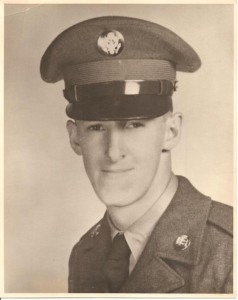Higgins, Cpl Robert
 The Department of Defense POW/MIA Accounting Agency announced today that the remains of a U.S. soldier, missing from the Korean War, have been identified and will be returned to his family for burial with full military honors.
The Department of Defense POW/MIA Accounting Agency announced today that the remains of a U.S. soldier, missing from the Korean War, have been identified and will be returned to his family for burial with full military honors.
Army Cpl. Robert Higgins, 20, of Philadelphia, will be buried April 11, in New Town, Pa. In mid-February 1951, Higgins was assigned to Battery C, 15th Field Artillery Battalion, 2nd Infantry Division and was deployed near Hoengsong, South Korea, when their defensive line was attacked by Chinese forces. U.S. forces suffered more than 200 casualties and more than 100 men were taken prisoner. This battle is commonly known as the Hoengsong Massacre. During the battle, the unit was forced to withdraw south to a more defensible position. Higgins was reported as missing in action Feb. 13, 1951. While there are no reports naming Higgins as captured, more than 100 men from his unit were documented to have been captured and taken to North Korea.
Between 1991 and 1994, North Korea turned over to the U.S. 208 boxes of human remains believed to contain more than 400 U.S. servicemen who fought during the war.
In June 1999, a joint U.S./Democratic People’s Republic of Korea (D.P.R.K.) team excavated a burial site east-northeast of Kujang, North Korea, and recovered human remains. Bone samples from the remains were sent to the Armed Forces DNA Identification Laboratory (AFDIL) for analysis. This analysis revealed that Higgins’ remains were among those turned over by North Korea and among those recovered during excavation.
To identify Higgins’ remains, scientists from DPAA and AFDIL used circumstantial evidence, radiograph comparison, mitochondrial DNA analysis, which matched his cousin, and Y-chromosome Short Tandem Repeat (Y-STR) DNA analysis, which matched his nephew.
Today, 7,852 Americans remain unaccounted for from the Korean War. Using modern technology, identifications continue to be made from remains that were previously turned over by North Korean officials, recovered by American recovery teams, or turned over by South Korean recovery teams.
For additional information on the Defense Departm
